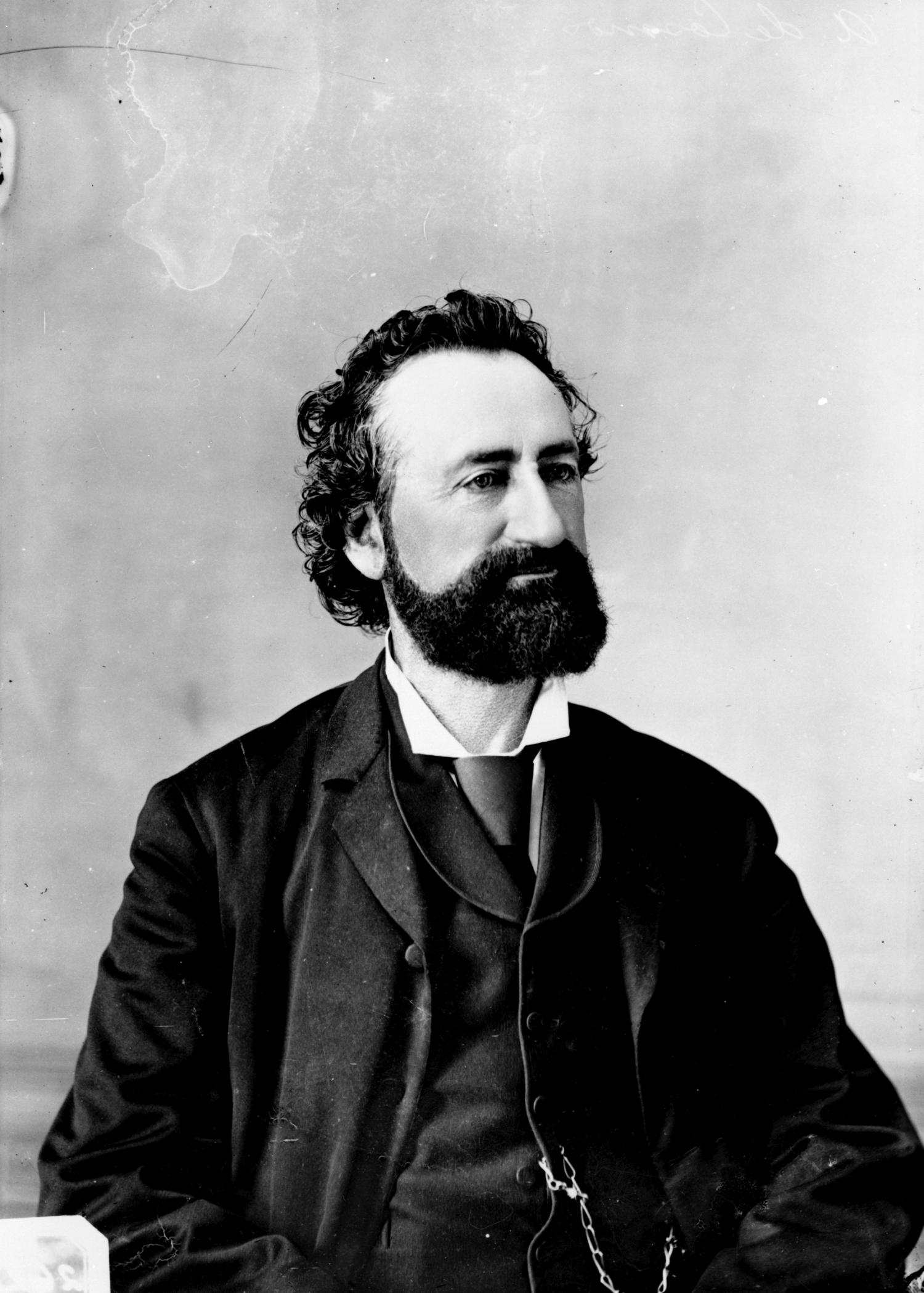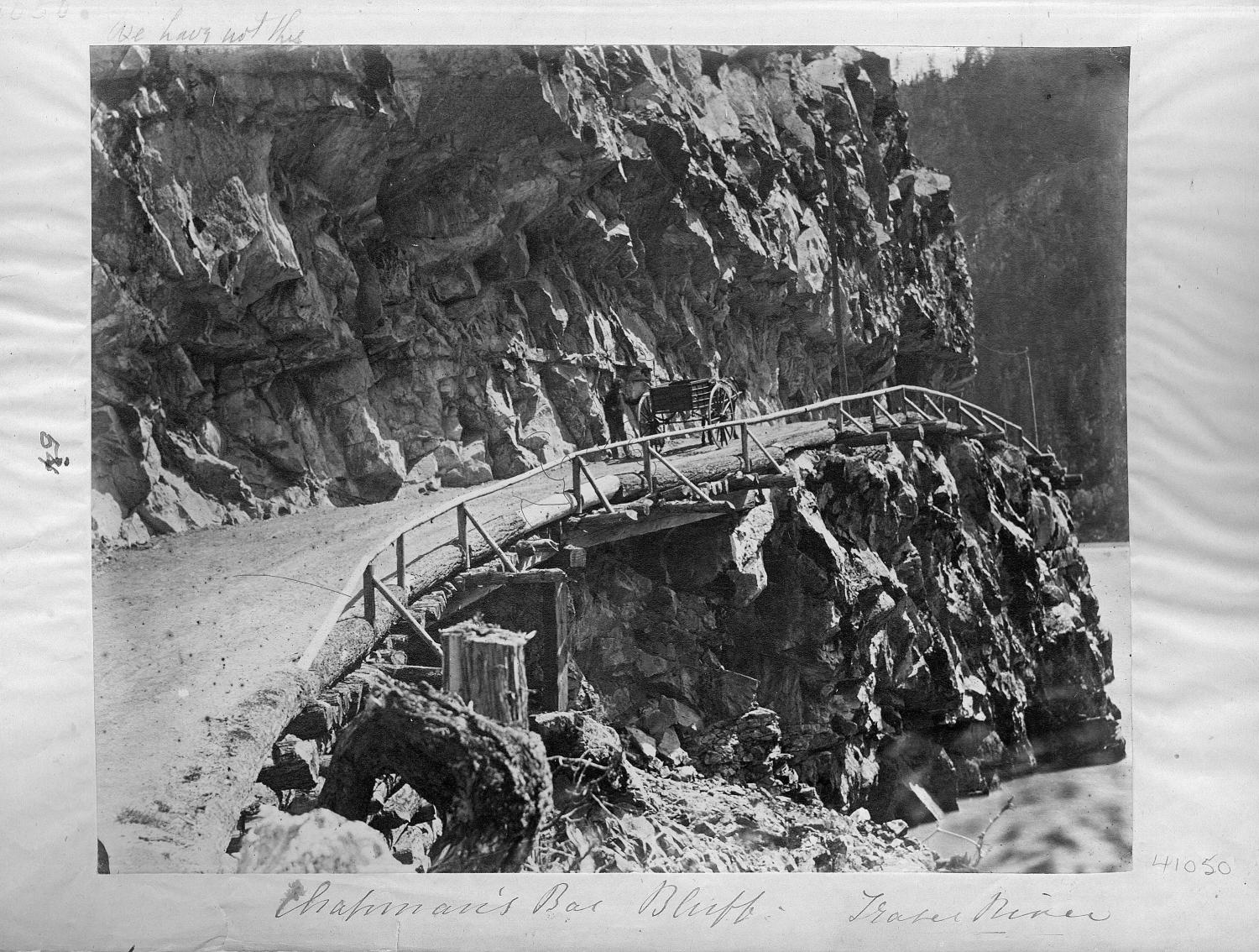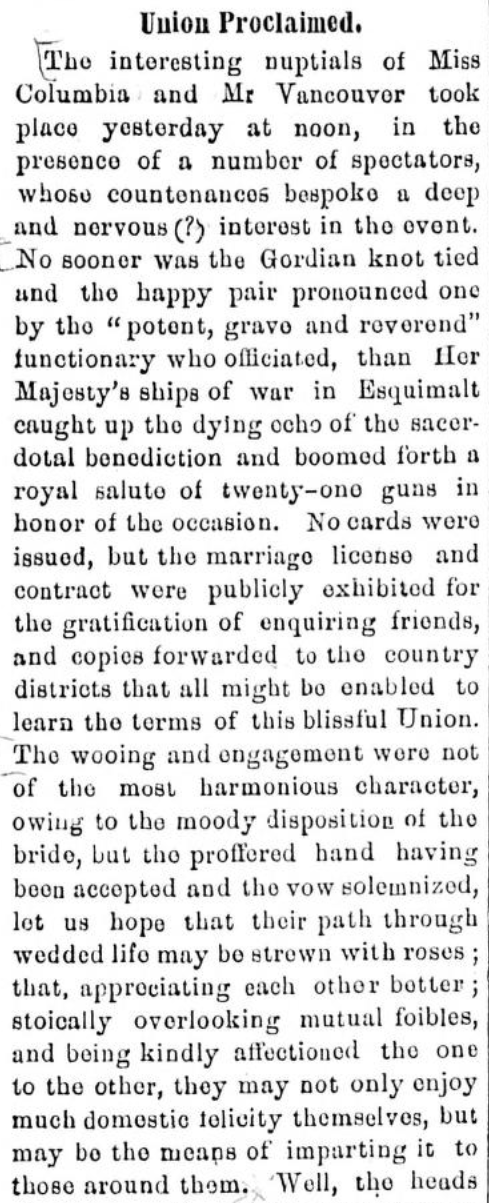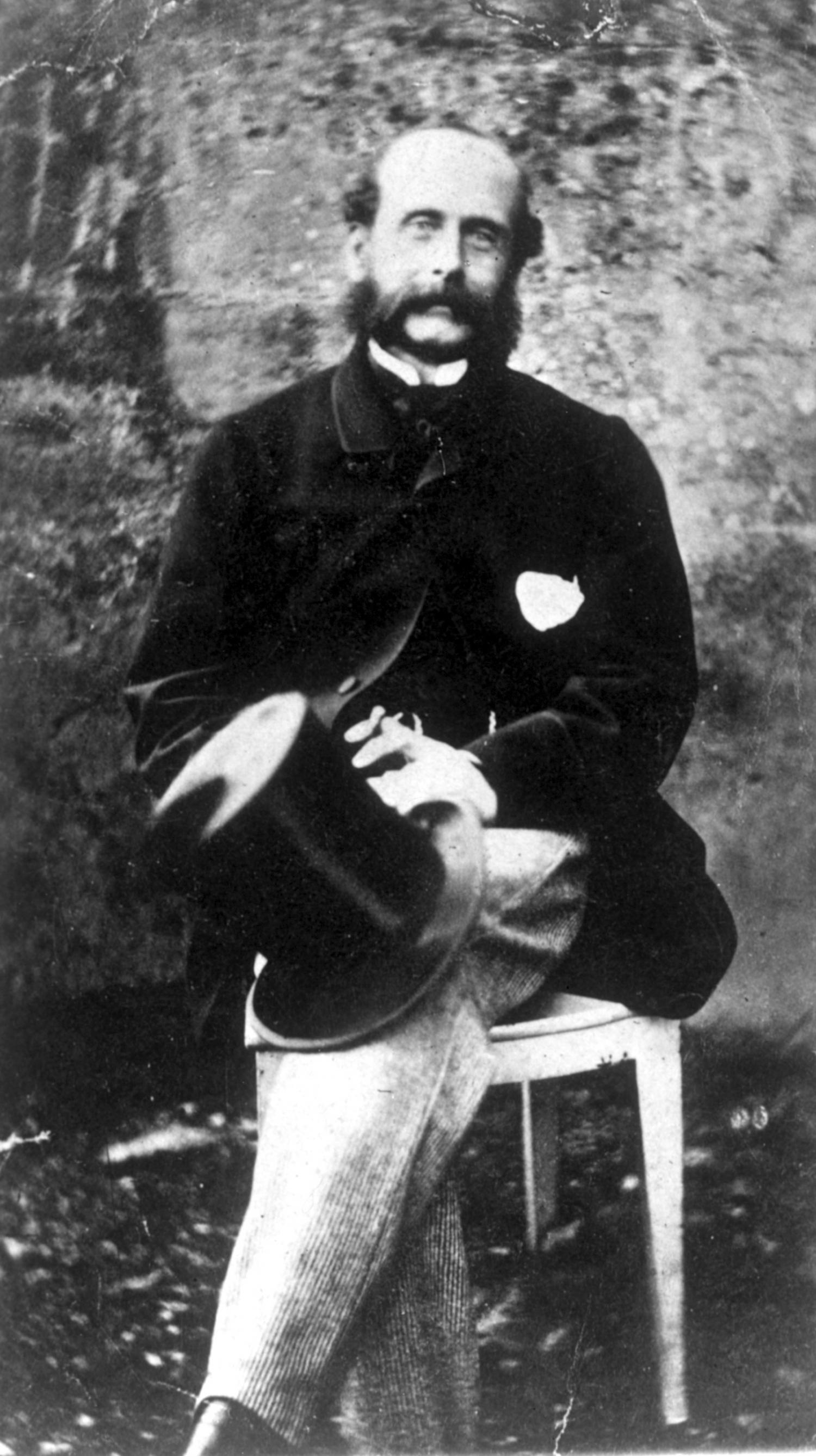The Colonies Unite
Drowning in debt, Britain's twin colonies begrudgingly become one
Date: 1866
By the mid-1860s, Britain’s colonies in the Pacific Northwest continued to struggle with overwhelming debt. James Douglas, the former governor of the Colonies of Vancouver Island and British Columbia, had borrowed heavily to fund major public works projects at the height of the gold rush era. But with less gold to be mined and fewer prospectors arriving on Victoria’s shores, the local economy had quickly gone from boom to bust. Meanwhile, London’s Colonial Office refused to lend a hand to its flailing outposts, leaving leaders like Douglas to borrow even more.
Some, like Vancouver Island Governor Arthur Kennedy, pointed to the unnecessary cost of funding two separate colonial governments located just a stone’s throw from each other. Perhaps the amalgamation of the colonies could help alleviate their financial straits? In January 1865, Amor de Cosmos, an eccentric member of Vancouver Island’s legislative assembly, introduced a motion calling for just that. But not everyone was on board. Despite bemoaning “the extreme inconvenience” of having “two governors of equal authority close to each other yet far from home,” Frederick Seymour, then-governor of the mainland, staunchly opposed the proposal at the outset. He didn’t believe the union would benefit the mainland colony. However, Seymour eventually relented.
On Aug. 6, 1866, Vancouver Island and the mainland became one colony. The new entity took British Columbia’s name; Victoria became its capital, and Seymour its governor. And though advocates believed the move would improve the colonies’ debt burden, it had little such effect. After amalgamating, the new Crown Colony of British Columbia was approximately $1.5 million in debt. The union did not solve the colony’s money woes. But it did spur further discussion about B.C.’s relationship to the confederation of British colonies coming together out east — what would soon be known as Canada.
Sources:
1. Barman, Jean. The West Beyond the West: a History of British Columbia. University of Toronto Press, 2007.
2. Forsythe, Mark, and Greg Dickson. The Trail of 1858: British Columbia's Gold Rush Past. Harbour Publ., 2008.
3. Hawkins, Gordon. The De Cosmos Enigma. Ronsdale Press, 2015.
4. Shelton, W. George. British Columbia & Confederation. Published for the University of Victoria by the Morriss Printing Company Ltd., 1967.
5. Tattrie, Jon. British Columbia and Confederation. The Canadian Encyclopedia, 19 Dec. 2014, www.thecanadianencyclopedia.ca/en/article/british-columbia-and-confederation.
6. Woodcock, George. British Columbia: a History of the Province. Douglas & McIntyre, 1994.





